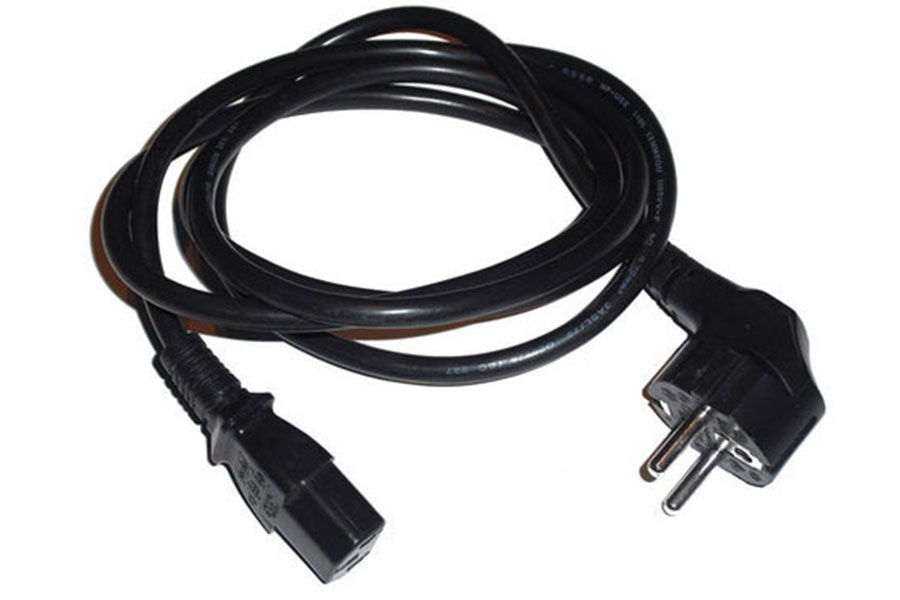
Power Cable
an electric cable designed to transmit electric power from the place where it is produced or converted to industrial enterprises, stationary power and lighting installations, transportation installations, and public utilities. The term “power cable” in the generally accepted sense refers to cables designed to carry voltages up to 35 kilovolts (kV),usually with paper insulation impregnated with a viscous insulating compound. A cable with oil under pressure is used for higher voltages .
The most extensively used power cables are designed to carry voltages up to 10 kV. They contain three aluminum or, less often, copper sector- shaped conductors, with a cross section up to 240 sq mm. The primary insulation on such power cables consists of paper tapes applied in a spiral around each conductor; the tapes are impregnated with a viscous insulating compound of 75 to 85 percent mineral oil and 15 to 25 percent rosin. The thickness of the insulation around each conductor depends on the nominal voltage of the cable and varies from 0.75 mm for 1 kV to 2.75 mm for 10 kV. The insulated conductors are twisted together and surrounded by an insulating paper covering approximately half the thickness of the insulation around each conductor. An airtight metal sheath made of lead or aluminum (the latter material is becoming predominant) is pressed onto the paper covering, followed by a protective jacket.
Power cables designed to carry voltages of 20 to 35 kV have round conductors with individual insulation up to 9 mm thick. Each conductor has an individual metal sheath or a covering made of metal foil.
In the operating temperature range of 50° to 80°C, the viscosity of the oil-rosin compound is lowered. As a result, on inclined portions of a power cable run the uppermost parts of the cable can become unserviceable because of the gradual flow of the liquid insulation. Therefore, the difference between the heights of the upper and lower points in a cable run is strictly limited to maximum permissible values of 5 to 25 m
for cables carrying voltages of 35 to 1 kV, respectively.
One of the principal trends in improving power cables is the expansion of the output of cables having a nonflowing impregnating compound, which permit cable runs with steeply inclined and vertical segments. Another trend is the changeover from paper insulation to insulation made from polymers, such as polyvinyl chloride and polyethylene. The use of improved types of insulation results in significant savings in deficient paper, oils, and rosin and reduces labor expenditures and production time. The use of such insulation materials makes cables lighter and increases the permissible operating temperature. For example, a power cable with insulation made of cross-linked polyethylene maintains a high resistance to deformations even at temperatures up to 150°C over a limited time. This property is very important during short circuits.
In the operating temperature range of 50° to 80°C, the viscosity of the oil-rosin compound is lowered. As a result, on inclined portions of a power cable run the uppermost parts of the cable can become unserviceable because of the gradual flow of the liquid insulation. Therefore, the difference between the heights of the upper and lower points in a cable run is strictly limited to maximum permissible values of 5 to 25 m
for cables carrying voltages of 35 to 1 kV, respectively.
One of the principal trends in improving power cables is the expansion of the output of cables having a nonflowing impregnating compound, which permit cable runs with steeply inclined and vertical segments. Another trend is the changeover from paper insulation to insulation made from polymers, such as polyvinyl chloride and polyethylene. The use of improved types of insulation results in significant savings in deficient paper, oils, and rosin and reduces labor expenditures and production time. The use of such insulation materials makes cables lighter and increases the permissible operating temperature. For example, a power cable with insulation made of cross-linked polyethylene maintains a high resistance to deformations even at temperatures up to 150°C over a limited time. This property is very important during short circuits.